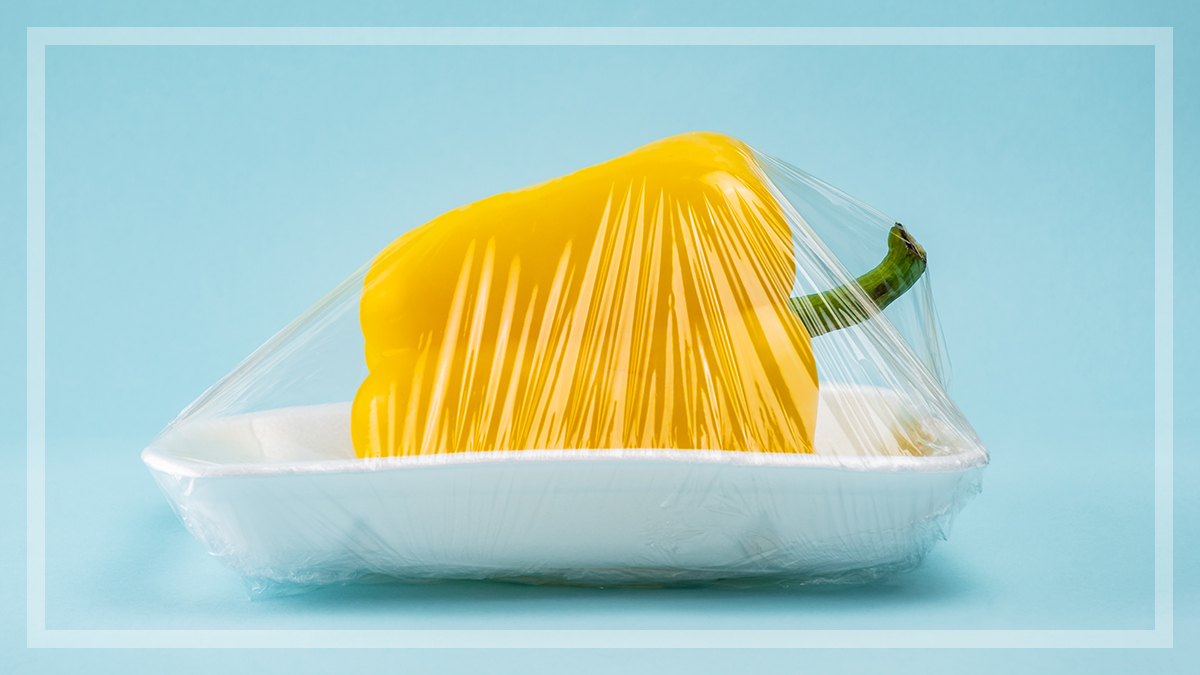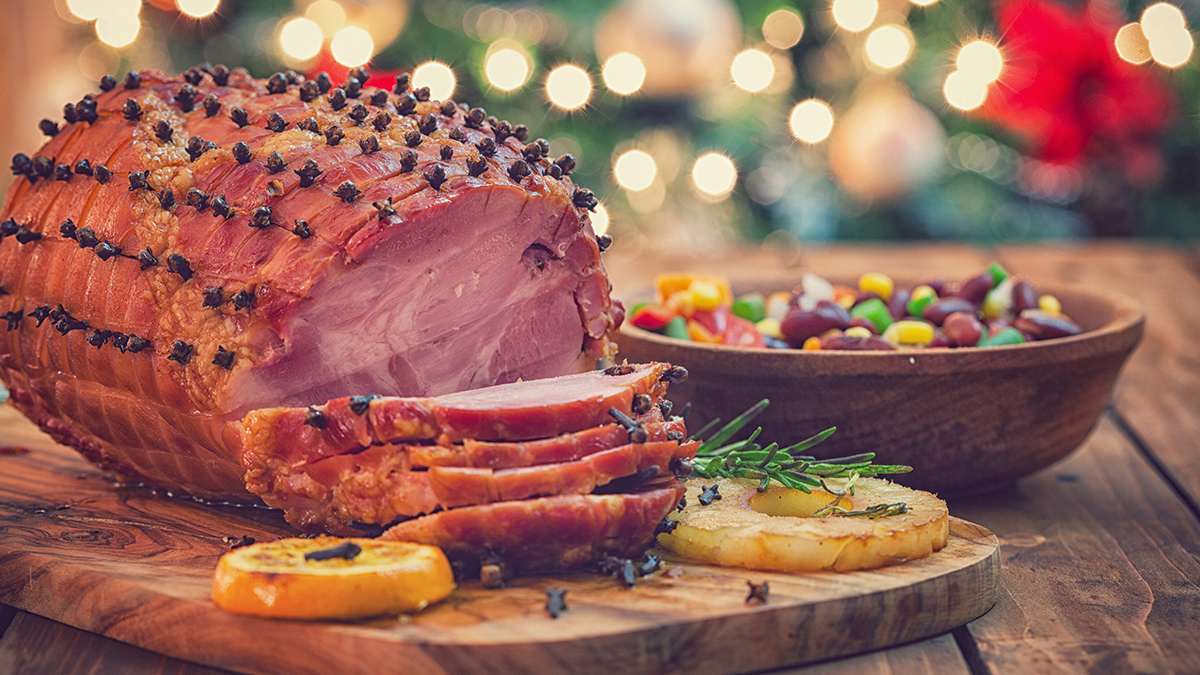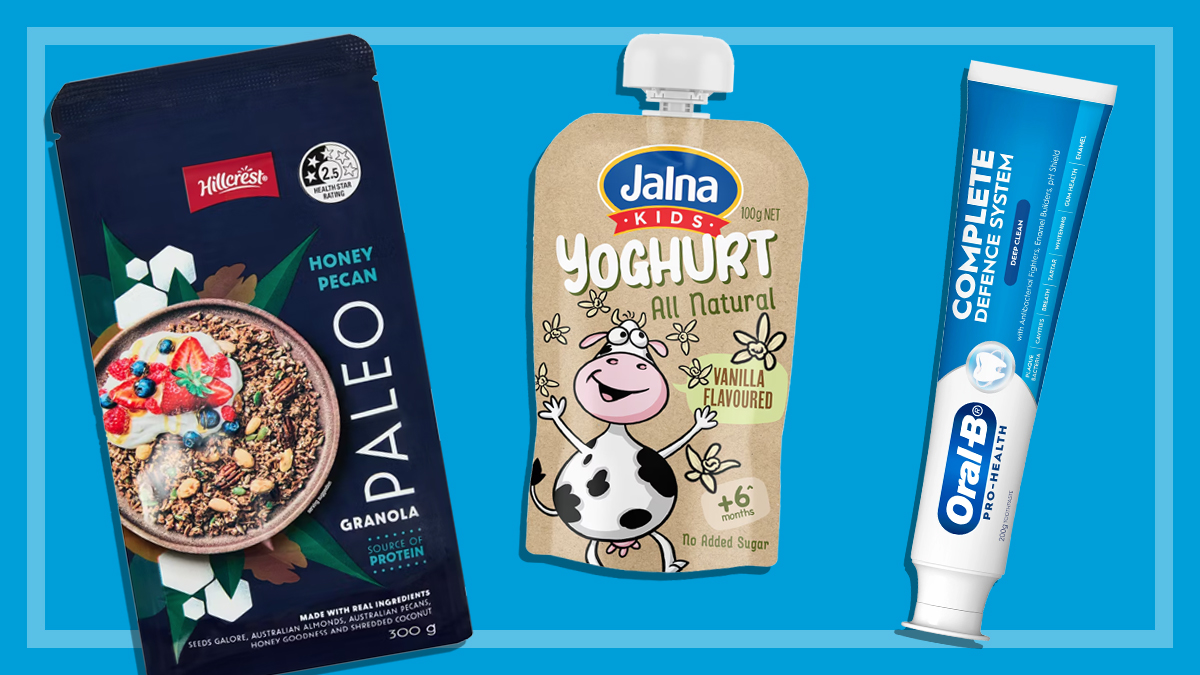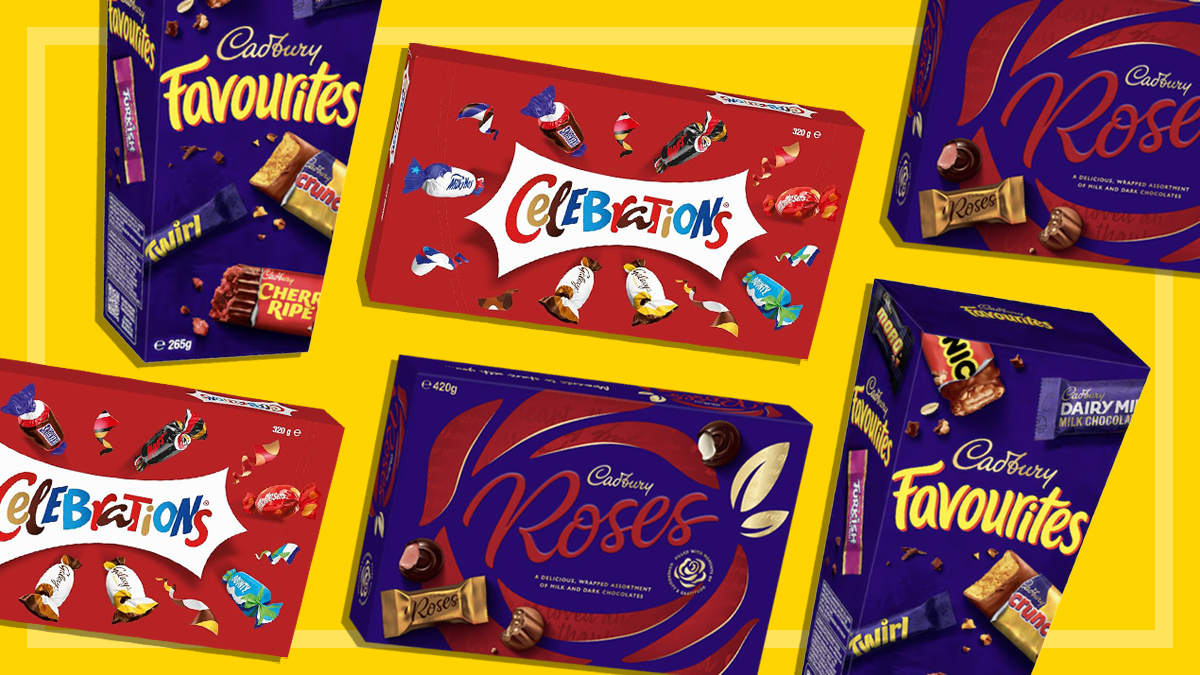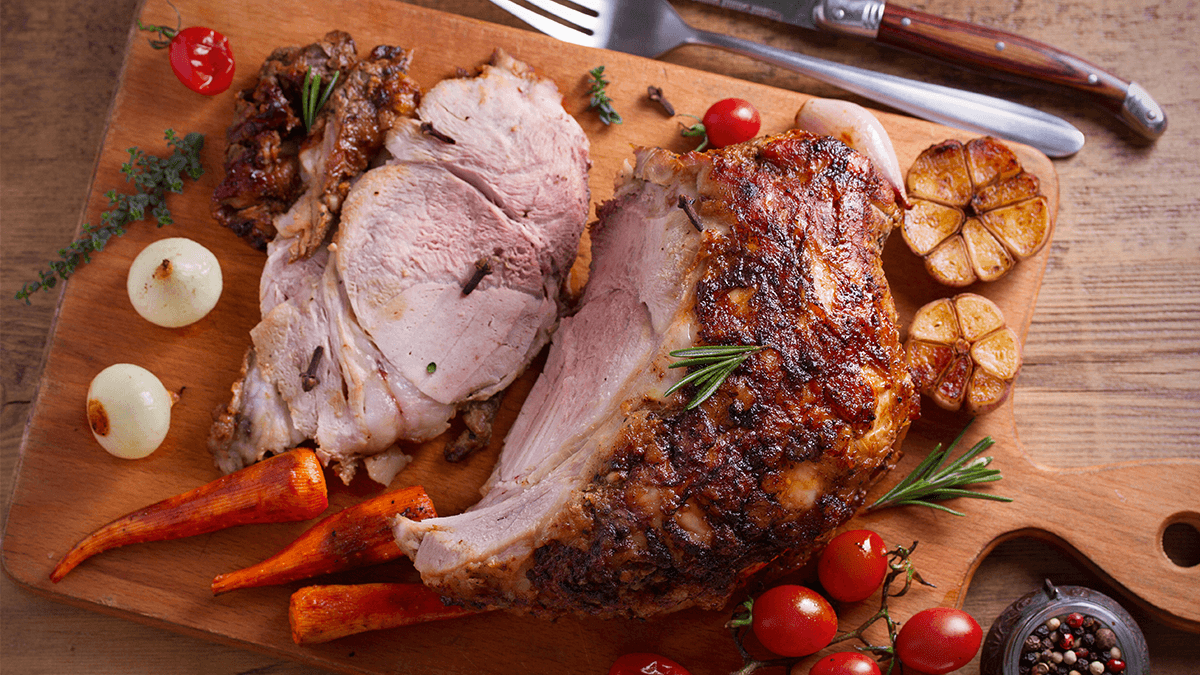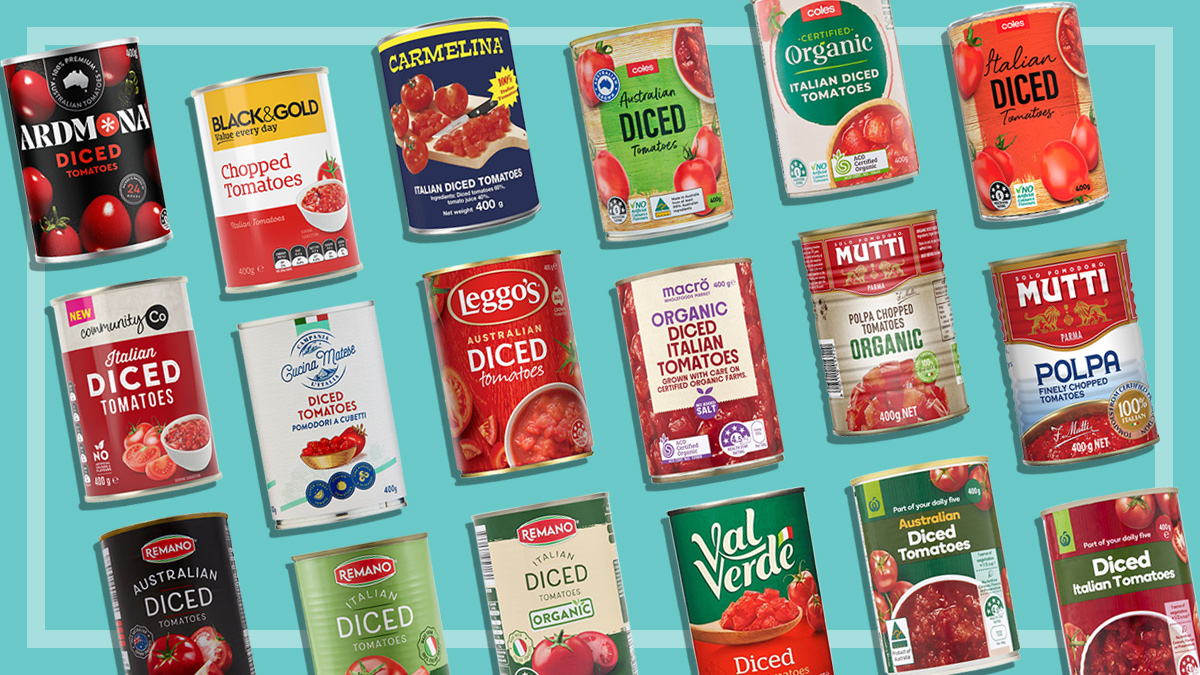Get our independent lab tests, expert reviews and honest advice.
Reducing waste at home with reusable food covers
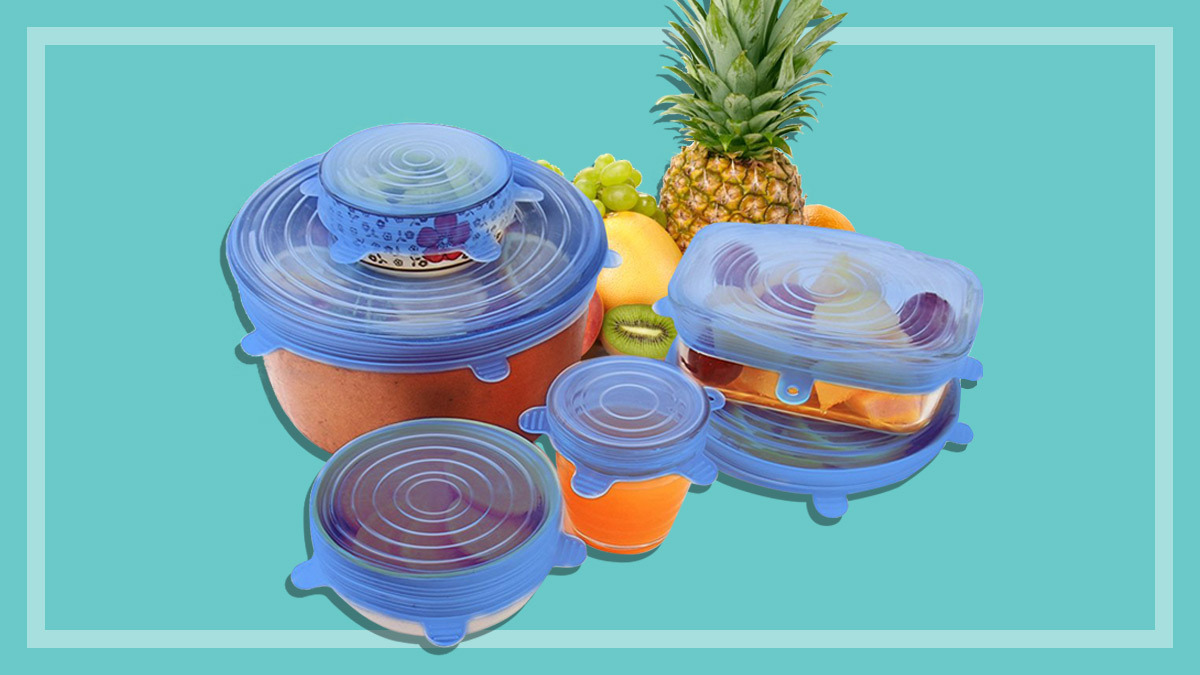
There are many environmentally friendly ‘green’ alternatives to cling wrap, such as beeswax wraps and reusable silicone pouches. But with so many options available, it can be difficult to figure out which product is right for your needs.
On this page:
- Wax wraps
- Silicone food savers/huggers
- Reusable cotton food covers
- Reusable silicone 'film'
- Compostable plastic wrap
- Reusable sandwich bags
- Reusable food covers growing in popularity
- Why use reusable food covers?
- Can I REDcycle cling film?
We look at the pros and cons of four different types of reusable food covers.
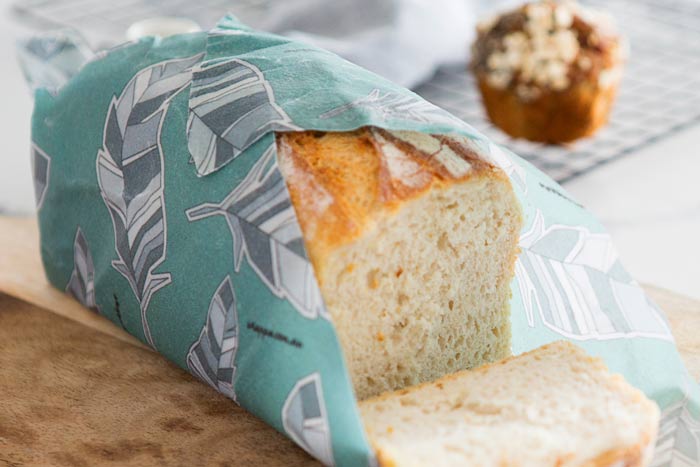
Wax wraps
Brands include Bee Wrappy, Little Bumble, Apiwraps, Wrappa, Bee Green, Green + Kind
What is it and what’s it made from? Cloth wraps are coated with beeswax or, for vegan versions, soy or other plant waxes, making them flexible and helping them ‘cling’ to food or containers, particularly when they’re warmed with the heat from a user’s hands. Depending on the brand, they may be made with organic cotton and/or organic, plant-based dyes.
Price Most brands sell combo packs of various sizes, and prices vary depending on the size and quality. Bee Green Beeswax Wraps start at $3 for their extra-small size and $12 for their jumbo size.
Suggested uses Wrapping around fruit and vegetables or across bowls or other containers to keep food fresh.
Pros Can be washed and reused for up to 12 months. Then either re-waxed or composted in the garden.
Cons They can’t be washed in hot water so they’re not suitable for wrapping meat or fish and they can’t be microwaved or put in the dishwasher. Some may also need a rubber band to properly seal them around containers.
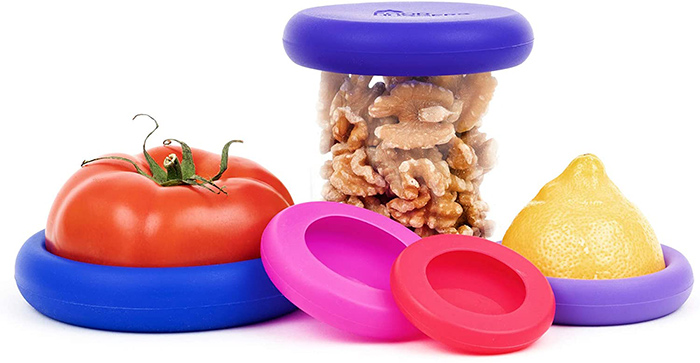
Silicone food savers/huggers
Brands include Food Huggers, Farberware
What is it and what’s it made from? Shallow, expandable silicone ‘cups’ that ‘hug’ around the cut edge of fruits and vegetables, keeping them fresher for longer.
Price Various, depending on size. Food Hugger’s set of five comes in different sizes and sells from $23.01.
Suggested uses Works on most fruits and vegetables including apples, onions and tomatoes. Can also be used over cans, jars and other small containers. Specialty shapes are sold that work best for avocados.
Pros Easy to use and they keep food fresher – and for days longer – than if food is left uncovered.
Cons Although they’re reusable, once they tear or crack they’re not biodegradable. They may pick up odours from strong-smelling food.
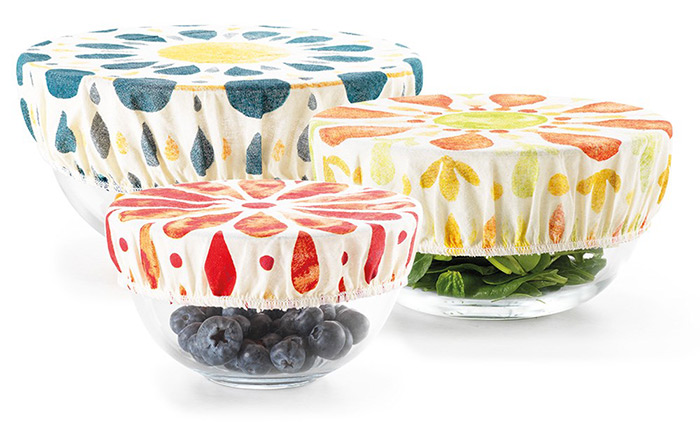
Reusable cotton food covers
Brands include Scullery, 4MyEarth, Karlstert
What is it and what’s it made from? Cotton canvas covers with elasticised sides that fit snugly over bowls to keep food fresh and nasties out.
Price 4MyEarth’s set of four comes in various sizes and retails for $39.95.
Suggested uses Use in place of plastic wrap to secure leftover food in bowls.
Pros Machine washable for repeated use.
Cons May not fit every size bowl; you’ll probably need a full set to fit all the different bowl sizes in your kitchen cupboard.
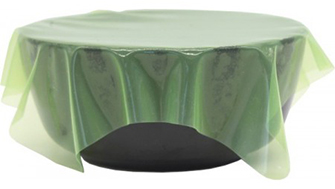
Reusable silicone ‘film’
Brands include Agreena, Bare & Co
What is it and what’s it made from? Flexible, stretchy, reusable, food-grade silicone film that can be used in place of cling wrap or baking paper.
Price Agreena’s four-pack of 2 x 20cm square wraps and 2 x 30cm square wraps retails for $27.95.
Suggested uses Covering food and baking.
Pros Dishwasher, microwave and oven-safe, although not at high temperatures.
Cons Non-biodegradable, although Agreena has a partnership with an independent recycling facility allowing customers to return used product for recycling.

Compostable plastic wrap
Brands include Seed & Sprout, SugarWrap, Great Wrap
What is it and what is it made from? An alternative to plastic cling wrap that breaks down in home compost systems in as little as 180 days. It’s made from various plant-based polymers including PLA and PBAT.
Price Great Wrap sells two 30 metre rolls for $14.95
Suggested uses Use wherever you’d use ordinary cling wrap, such as wrapping individual ingredients like cheese or vegetables, or over the top of bowls and plates.
Pros Unlike conventional cling film that accumulates in landfill, this product should break down into carbon dioxide, biomass and water.
Cons Don’t be tempted to pop it into the bin thinking it will decompose nicely in landfill. These materials are designed to break down in composting conditions, not your regular recycling or bin. They will decompose in landfill – eventually – but it could take years.
Tip: Look for products that state they work in home composts as some ‘green’ plastic wrap is only compostable in industrial conditions.

Reusable sandwich bags
Brands include Kappi, Sinchies, Bare & Co, Ecopocket
What is it and what’s it made from? Silicone or plastic reusable ‘ziplock’ bags and pouches
Price The Ecopocket starter pack of three pouches retails for $16.95.
Suggested uses Storing any fresh food that would usually be stored in a disposable zip-lock pouch.
Pros Versatile and easy. Freezer-safe.
Cons Can be used in the dishwasher, but handwashing is more likely to get them clean. The plastic brands like Sinchies are not suitable for microwaves.
Reusable food covers growing in popularity
Green products like beeswax wraps and reusable silicone pouches are becoming increasingly popular for storing and transporting food.
“We saw a 500% increase in sales after our first year, and a 300% increase from 2018 to 2019,” says Sam Bala, who owns Blue Mountains NSW-based Bee Wrappy beeswax wraps with his wife Christine.
A spokesperson from Biome says that reusable wrappers and food coverings enjoyed a huge surge in popularity at the time that the ABC’s War on Waste program was on screens. Sales have levelled off since then but remained steady.
In 2019 we asked members of our CHOICE Community whether they’ve used reusable food covers, and 83% of respondents said they’ve used beeswax wraps, 35% have used silicone lids, and 26% have used silicone ziplock bags.
Kristie Middleton, from the Blue Mountains in NSW, is the mother of two boys – five-year-old Benjamin and two-year-old James. When Benjamin began preschool she, like many parents, sent him with a packed lunch wrapped in plastic.
“The preschool didn’t dispose of the rubbish, and when it kept coming home with him it became really clear how much we were using,” she says.
First she tried simply leaving Benjamin’s sandwiches unwrapped, but they’d come apart in his lunchbox and he’d refuse to eat them. After hunting local markets she bought a starter pack of Bee Wrappy beeswax wraps.
“I’d wrap sandwiches or make a little pouch for his sultanas,” she says. “Or use it to wrap round different compartments of his lunchbox if there was wet fruit in it like watermelon, to stop it leaking into the rest of his lunch.”
Once the wraps had proved themselves on the lunchbox front, Kristie decided to buy more wraps for use at home.
“I think we have 10 in total now, which doesn’t sound like much but it’s all you need,” she says. “You might wrap half an avocado, send a few in the lunchboxes but then things get eaten and they’re freed up again.”
She says most of her wraps have lasted around 12 months, although some don’t last that long while others hang in there for longer. And both boys, she says, like picking out their favourite patterns to take to school.
“We’ll never go back to plastic again,” she says. “It’s just one small step but it’s something.”
Can you reuse cling film?
If you’re not ready to give up the clingy plastic stuff just yet, it’s worth remembering that there’s nothing stopping you reusing it.
As long as you’re careful to avoid holes or tears, and providing it hasn’t been soiled by food, there’s no reason why you can’t use the same piece several times, giving it a longer time in circulation and reducing the amount you go through.
Use what you already have
The best way to limit your kitchen plastics consumption, and therefore your waste, is to make do with what you already have.
“We’ve become so reliant on things like cling wrap that we think we need an alternative … but often we didn’t need that product in the first place,” says Ilana Cooper, managing director of Radish Events, formerly Dan the Man Cooking, a B Corp Sydney catering company.
“There are a lot of things you already have in the house that you might not think of as traditional food storage. Tea towels, for example, or the old upside-down plate on a bowl.
“There’s definitely merit in being creative and using the resources you have.”
Food storage tips
- Pack sandwiches straight into lunch boxes without covering; make sure you pick the right size for the bread you’re using.
- An upturned plate or saucepan lid on top of a bowl keeps food as fresh as any plastic.
- Reuse plastics such as bread bags, grape bags, rotisserie chicken bags. Just be sure they’re clean.
- Reuse glass jars from products such as jams, pickles or dressings.
- Freeze leftover herbs into ice cube trays rather than wrapping them in plastic.
- Store leafy greens such as spinach or silverbeet in a jar with water on the kitchen counter; it will keep longer than in the fridge if the water is changed regularly.
- Cut vegies don’t necessarily need covering. Half an avocado can be stored face-down on a plate and roast vegies can sit uncovered in a fridge as long as you’re unconcerned with odours.
Why use reusable food covers?
According to leading plastic wrap manufacturer Glad, the Australian plastic wrap market is worth $51 million, and nine out of 10 Australian households buy plastic wrap.
That’s a lot of disposable, single-use plastic wrap potentially ending up in landfill, or the environment.
Plastic wrap is just one tiny percentage of the plastic we get rid of every year – the World Wildlife Fund says globally there are 53kg of plastic produced per person per year.
And if plastic production carries on as models predict, roughly 12,000 million metric tonnes of plastic waste will be either in landfills or in the environment by 2050.
It’s no wonder that many households are looking for alternatives to plastic wrap and other disposable plastic food storage options such as sandwich bags.
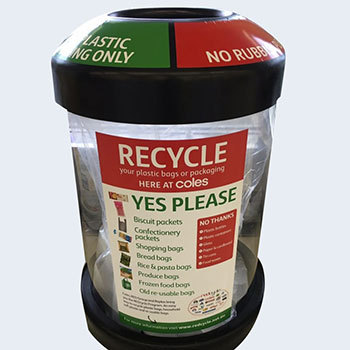
Can I REDcycle cling film?
While many types of soft, scrunchable plastic can be recycled at selected supermarkets through the REDcycle scheme, cling wrap isn’t one of them in some cases.
“Some cling wrap is made of PVC, a material we are not able to process, and some isn’t,” says Rebeca J. O. Gleghorn, marketing and communications manager for REDcycle.
“The issue becomes that with them all mixed together, it’s impossible to distinguish between the two once in the recovery system.”
REDcycle have since updated their allowed list of cling film to include the following brands: Glad, Coles Home brand and Woolworths Essentials Home brand only – or get yourself some reusable food covers.
Shopping links on the CHOICE website
CHOICE is an independent, non-profit organisation dedicated to helping consumers. Clicking a link will take you to a retailer’s website to shop. While we make money if you buy through some retailer links, this doesn’t influence any of our rankings. 100% of the money we make goes straight back into our non profit mission. We’re currently testing this service and will consider providing more shopping links in the future. Tell us what you think.

